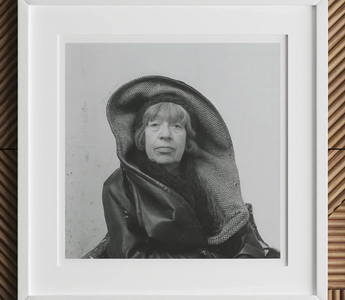They say the muse likes her artists weird. And in the private theatres of 14 brilliant misfits, routine didn’t just keep them sane, it kept the work alive. Call it superstition, call it system, call it survival: their rituals were tactics and now they've become roadmaps for other artists to follow.
So... is it all method, madness or both? Hard to tell, and maybe that’s the point. Whether they painted through pain or danced with delirium, one thing’s clear: genius doesn’t clock in. It consecrates the mundane and reshapes time. A reverent carnivale of creative compulsion, choreographed across time zones and temperaments.
Pour a coffee. Spark a vision. Find your rhythm. And let their obsessive devotion inspire your next spell.
Key Takeaways
Discipline Holds Chaos
Contrary to the myth of divine inspiration striking at random, these artists choreographed their lives with startling regularity. Each ritual acted as a container, granting shape to their obsessions so that chaos had a place to land.
Habit as Spellcraft
Routine wasn’t just a productivity hack. It was a conjuring. Beckoning the muse by showing up before she arrived. Repetition blurred into reverence. Each act became a quiet invocation.
Physicality Grounds the Ether
Art may be ethereal, but many artists built their practice on the body. Sweat, posture, gesture. Each a means of anchoring the intangible. In muscle memory, they found momentum.
Solitude as Ceremony
While each artist carved their path alone, none of them created in isolation from their true selves. Their rituals fostered communion with the inner cacophony. And by embracing stillness, repetition, or nocturnal seclusion, they turned solitude into ceremony.
Routine Liberation
To outsiders, these habits may seem rigid, even obsessive. But to those who practiced them, routine became a kind of liberation. A scaffold for creative risk. A boundary that held space for breakthroughs. When you give time a shape, imagination can overflow.
1.
Francis Bacon
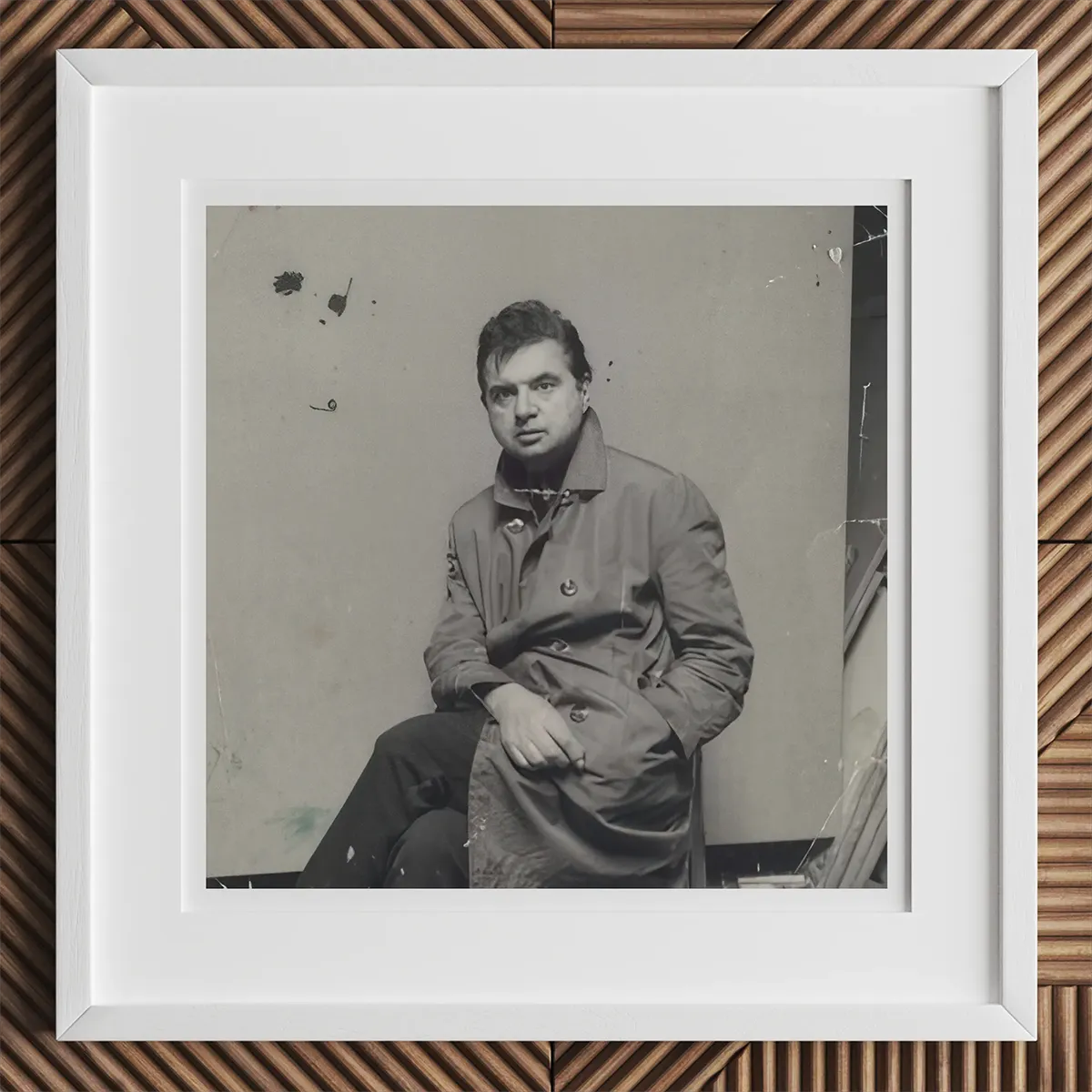
Chaos as Catalyst
Francis Bacon considered painting to be a form of violence. A wrestling with the canvas rather than a gentle coaxing. And he stormed every day like it owed him blood.
“I'm essentially a creature of habit,” he claimed. That habit? Champagne-soaked spirals after dusk, easel around midday. Wading out of last night’s booze soaked wreckage while nursing a hangover. Head pounding and nerves alight. “I don’t want to tell a story. I want the sensation,” he explained.
Hangover as Habit
Bacon’s Reece Mews studio was so packed with debris—paint tubes, newspapers, smashed glass—that the floor was virtually invisible. Then there were the paint-slapped walls, an avalanche of tattered photos, brushes buried like relics beneath paper carnage. Somehow delivering order from anarchy, he said, “I feel at home here in this chaos because chaos suggests images to me.” And a later excavation of the studio catalogued over 7,500 items, including animal skulls and rare medical books.
His afternoons were open territory. More work, more cigarettes, more champagne. By nightfall, he was dressed to the nines, prowling Soho’s bars and clubs with the precision of a jungle predator in a velvet suit. Stalking casinos, pub circuits and glamor in gutter light. Sleep often skipped. Sanity dancing on a highwire. Rhythm over rest.
Anarchy Turned Alchemy
Every day was a crucible laden with paradox. Chaos turned clockwork. Excess transfigured into enterprise. Not genius despite disorder, but because of it. Not madness, but method draped in mischief.
Bacon often painted in silence, but welcomed certain distractions: a friend’s voice, a cruel joke, another drink. And within his tempest, brilliance fermented. Until pigment, pain and persistence became indistinguishable.
His ritual was not a schedule but a circuit: indulgence, collapse, resurrection. The studio was both confessional and cage. From wreckage, he conjured raw mythologies of meat and ecstasy.
2.
Henri de Toulouse-Lautrec
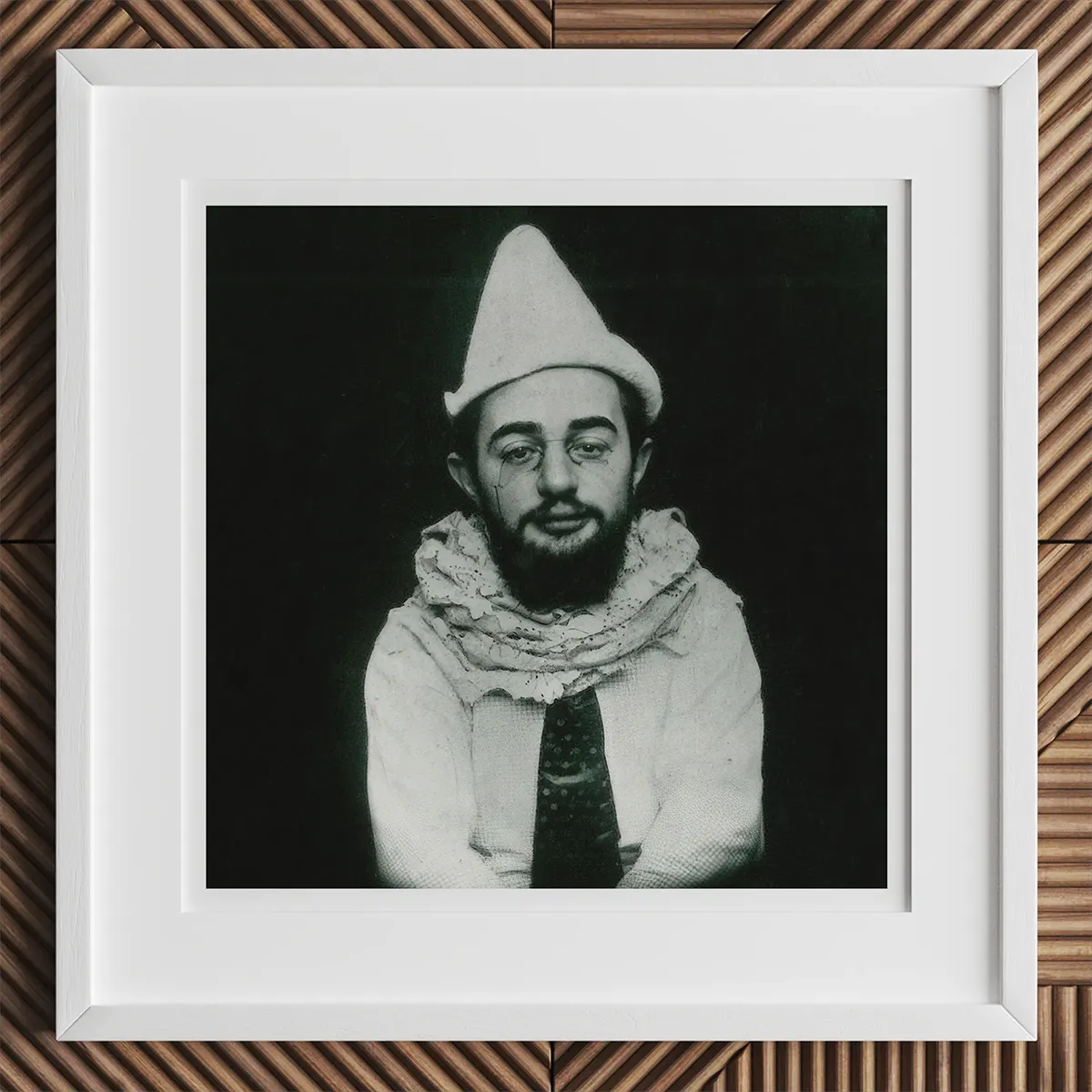
Henri Toulouse-Lautrec — Maurice Guibert, 1894
Devotion by Decadence
Toulouse-Lautrec belonged to darkness. Montmartre’s gaslit underbelly was his church and canvas. Sketchpad in one hand, cocktail in the other. And not just any elixir: an Earthquake. Half absinthe, half brandy, mixed like a dare and swallowed like scripture.
He didn’t visit cabarets. He haunted them. Moulin Rouge, Le Chat Noir, brothels wrapped in velvet fog. Stomping grounds. Muse machines. And every night, he drew like he drank: furiously, intimately, endlessly. Sketches transfigured into lithographs before dawn while the city began to stir. Sleep barely factored in. Recovery never part of his pact.
Paris gave him permission. Night fed his vision. Art devoured the rest.
Drunk on Deadlines
Despite chronic illness and physical disability, he maintained this highly productive output, driven by deadlines for cabarets and commercial clients. Using absinthe, ether, and cognac as both fuel and sedative. Often mixing alcohol with caffeine to maintain a specific level of jittery intensity.
Cabaret as Chapel
Syphilis stalked him. Alcohol gnawed away. And he didn’t flinch. Creativity demanded sacrifice. But death got dibs, eventually, and Henri died at just 36 years old. Not before he'd immortalized champagne, shadow and sin with joyful precision.
In his hands, revelry turned record. Routine became resurrection. He wasn’t chasing immortality. He was documenting immediacy. Seeing what others ignored: beauty with smudged lipstick, grace wobbling in garters, indulgence as devotion. Dressed in sequins and soaked in spirits.
3.
Louise Bourgeois
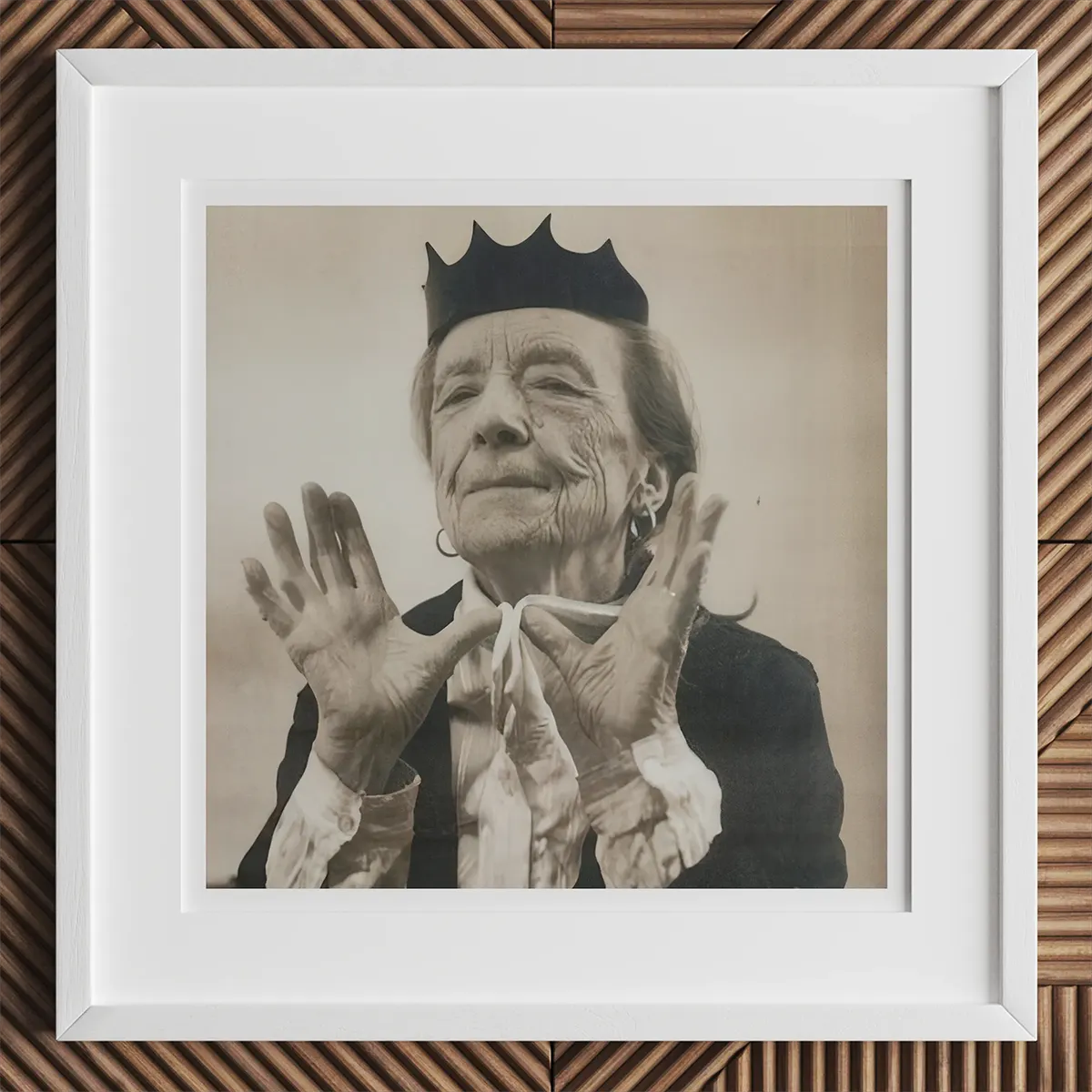
Louise Bourgeois — Bruce Weber, 1997 ©️ Bruce Weber
Insomnia’s Embrace
Louise Bourgeois couldn’t sleep, so she sketched. Insomnia was collaborator, not a curse. “For me the state of being asleep is a paradise I can never reach”, she quipped.
As night's shadows gathered, she awakened. Rising to her desk, to the page. Her drawing diary turned confidant. Looping lines becoming lullabies. Not for slumber, but solace. “A kind of rocking or stroking,” she called it.
Silence Before Sculpting
At dawn’s edge, she sometimes found rest. But at ten sharp, her chauffeur ferried her to the day's new sculptural battle. At her studio, she took tea with jam. Straight from the jar. A sugar jolt before work commenced in silence. “The least noise would upset her,” recalled assistant Jerry Gorovoy.
Afternoons softened into sketching again. A kind of recuperation, not repetition. Her days bookended by linework: morning rigidity, midnight release. Drawing was both anchor and exorcism.
Drawing as Survival Spell
Bourgeois didn’t conquer the night. She coexisted. Pattern replaced panic. Practice transfigured torment. Her insomnia was daily reality transmuted through ritual. And when light fled, she didn’t hide. She created. The dark wasn’t emptiness. It was material. And Bourgeois drew her way through.
4.
Joan Miró
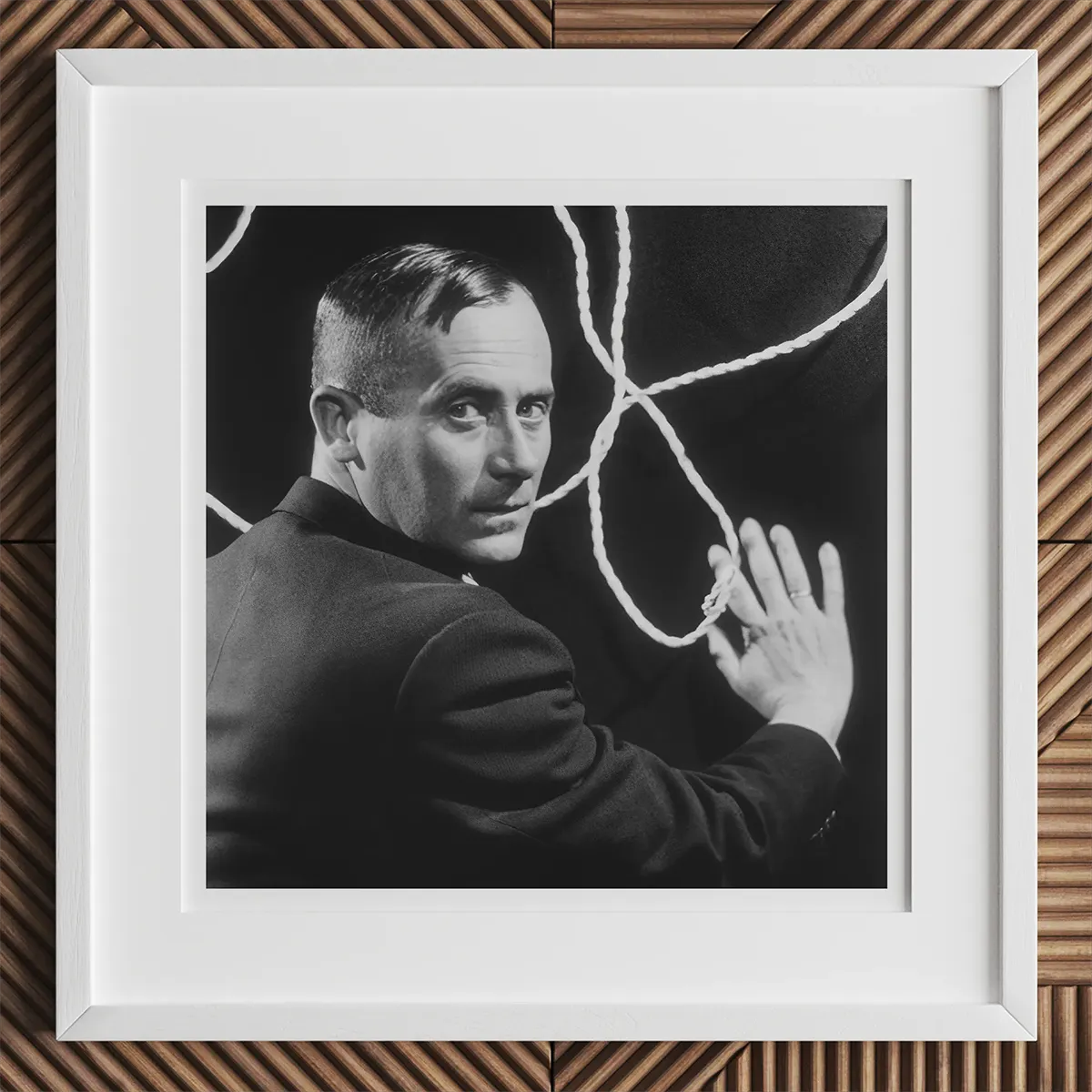
Joan Miró — Man Ray, 1933 ©️ Man Ray Trust
Sweat Against Sorrow
Joan Miró gripped time by the throat. Depression nearly drowned him once. Routine became raft. Living in 1930s Barcelona, he rose before sunlight, cold water against skin, fear kept at bay by movement.
Canvas by Daylight, Exorcism by Routine
Six a.m.: wake. Seven a.m.: battle with easel, pigments and purpose. No coffee breaks. No chatter. Just color pressed against catastrophe. Noon hit and he didn’t collapse. He jumped rope. Practiced gymnastics. Combat with the body. Boxing in Paris. Sprints on Catalan beaches. Like sadness could be sweated out.
Afternoons softened: sketches, ceramics, sculptural tinkering. Like a clenched jaw release. Evenings? Family cocoon. But nothing dulled discipline’s edge. Fitness wasn’t vanity. It was fortification. He’d lived without it. He knew what waited if routine cracked.
Miró didn’t paint escape. He painted equilibrium. Cerulean skies with teeth. Black suns rimmed in optimism. He described the beginning of his painting sessions as entering “a state of trance” or surrender to unconscious forces, saying “I try to escape from reality.”
Body as Boundary, Mind Beyond
His chaos came contained inside boundaries he constructed. Exercise was spellcraft. Canvas, his confession. Not therapy, but armor. Depression didn’t vanish, it circled. Watched. Waited.
But Miró stayed faster. Sharper. Stranger. Structure didn’t dull him. It saved him. The work didn’t demand madness. It demanded vigilance. His habits were rituals against unraveling. Art, not as expression, but exorcism. Each painting a ward. Each sunrise, another spell.
5.
Chuck Close
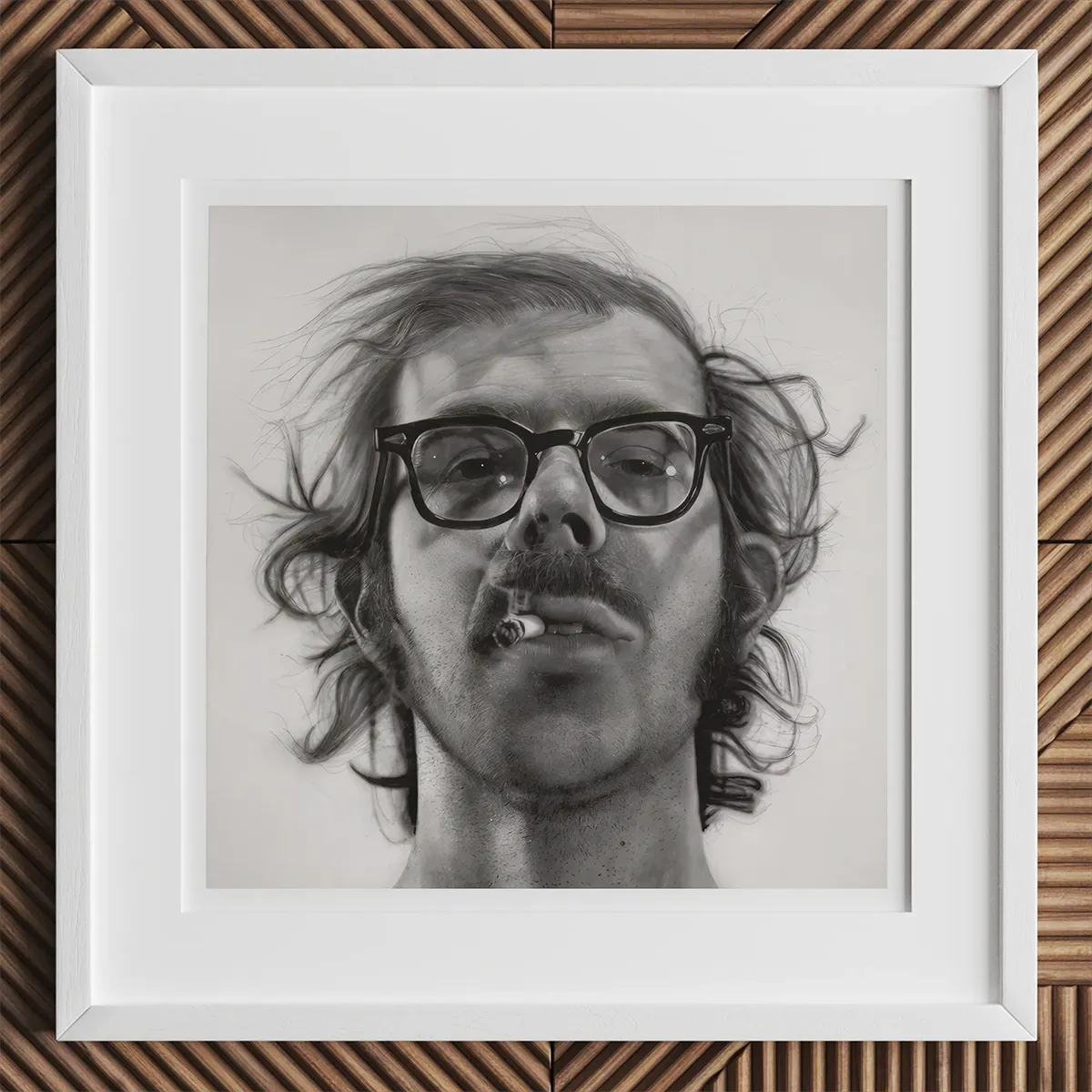
Chuck Close — self-portrait, 1968 ©️ Chuck Close
Relentless Return
Chuck Close built brilliance brick by brick. No lightning bolts. No divine frenzies. Just relentless return. He maintained rigid daily hours, beginning around 9 a.m., and worked in blocks throughout the day with minimal interruption.
After paralysis clutched his spine in ’88, he didn’t stop. He recalibrated. Adapting his technique and using a motorised easel and hand braces to continue painting.
Wheelchair-bound, motor skills compromised, he birthed a method so tight it could hum: three hours painting, pause, repeat.
“Inspiration is for amateurs,” he barked. “The rest of us just show up and get to work.” He even called his artistic approach “compulsive,” stating he felt uncomfortable when not working.
Gridwork and Grit
His compulsion was scaffolding. Mornings: brush lifted like invocation. Noon: retreat for sandwiches, headlines, Today show static. Afternoon round: canvas again. And one rule ruled all: no interruptions before 4 p.m. Calls? Meetings? Exiled. Time fractured by obligation couldn’t host transcendence.
Close also had prosopagnosia (face blindness), which directly informed his portraiture. By working from grids and photographs, he constructed faces systematically to compensate for his inability to recognize them in real life.
Stillness Built from Noise
Contradiction stirred under control. Close painted with static humming behind him, spooling from television sets. “It keeps me from being anxious,” he explained. Steadying him. Chaos numbing the noise within. Meticulous work emerging against background mayhem.
6.
Henri Matisse
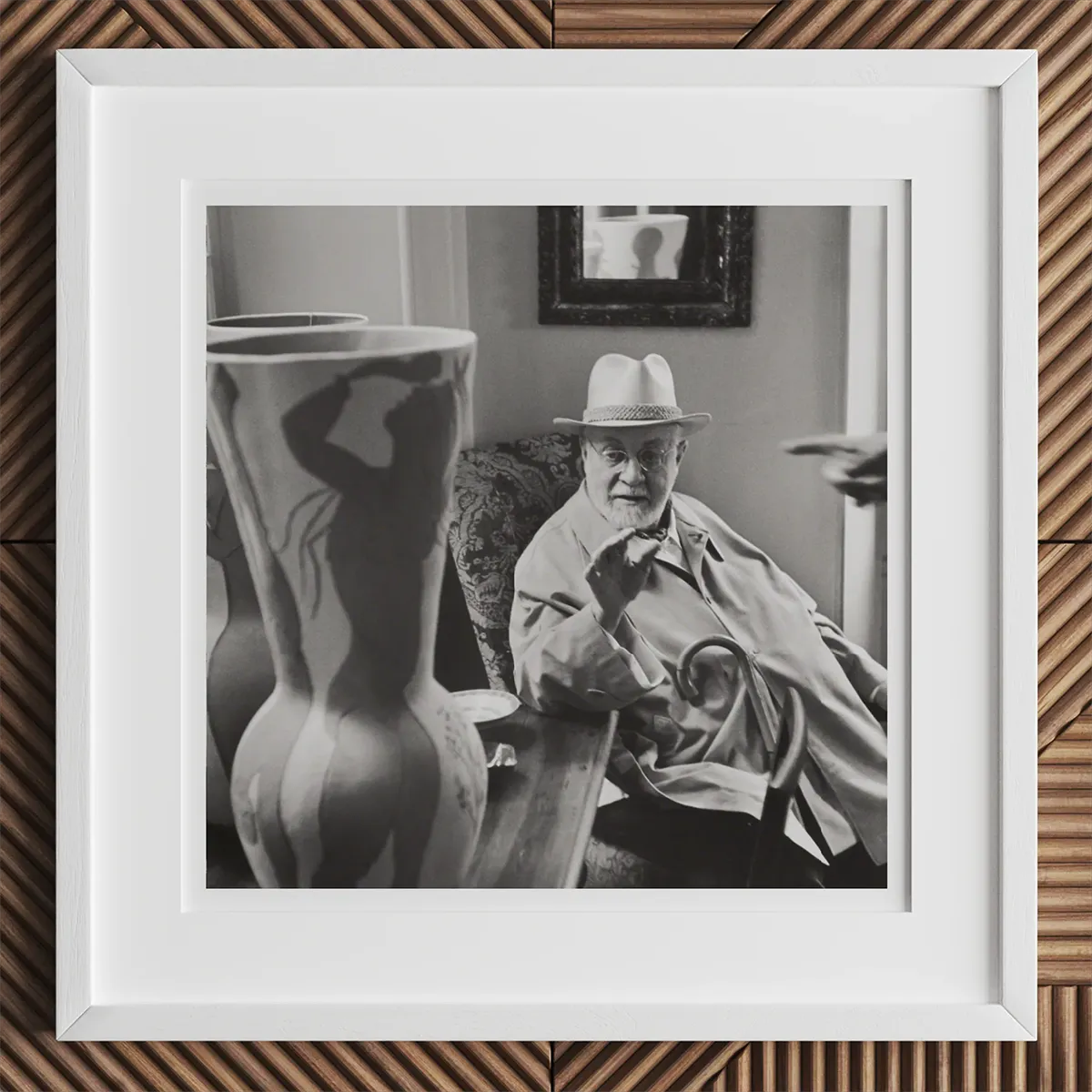
Henri Matisse — Henri Cartier-Bresson, 1951 ©️ Henri-Cartier Bresson Foundation
Routine Reverence
Henri Matisse tended days like orchids. Inside his Vichy conservatory, time bent toward joy. Exotic birds chirped beside pumpkins the size of dreams. Chinese figurines stood watch as brushes performed their daily benediction. Art radiated from the walls like sun through stained glass.
No Time for Boredom
Time wasn’t linear in Matisse’s world. It looped, bloomed, swayed in rhythm with painted lilies and open windows. He was known to wear a workman’s smock while painting and kept his environment meticulously clean. And he worked in near-monastic silence, disliking interruptions. His meals left outside his studio door to avoid disruption.
For over fifty years, the ritual never blinked: nine to noon with color dripping from fingers; then lunch, nap, resurrection; back at if from two till evening. Even on Sundays. Especially then.
“Just this once,” he’d coax models with practiced mischief. “Take Monday instead!” Double pay. Triple promises. Always reneged. Because Sabbath meant surrender. Not to gods, but gouache. “But Monsieur Matisse,” one model protested, “this has been going on for months.” He wasn’t fooling anyone. Still, they stayed.
And Matisse wasn’t dodging boredom. He denied its existence. “Basically I enjoy everything,” he shrugged, ankle-deep in bliss. Every brushstroke fed the mythos. Every excuse to keep working camouflaged a deeper truth: Matisse didn’t rest because he didn’t need rescue.
Blossoms from Constraint
Later in life, while bed-bound due to cancer surgery, he developed the technique of cut-paper gouache “drawing with scissors,” allowing him to continue making art from under his sheets.
Creation was his consecration. Routine wasn’t a cage. It was his cathedral. And inside, he prayed with pigment. Created through discipline. Transforming constancy into a garden where every hour bore fruit.
7.
Georgia O’Keeffe
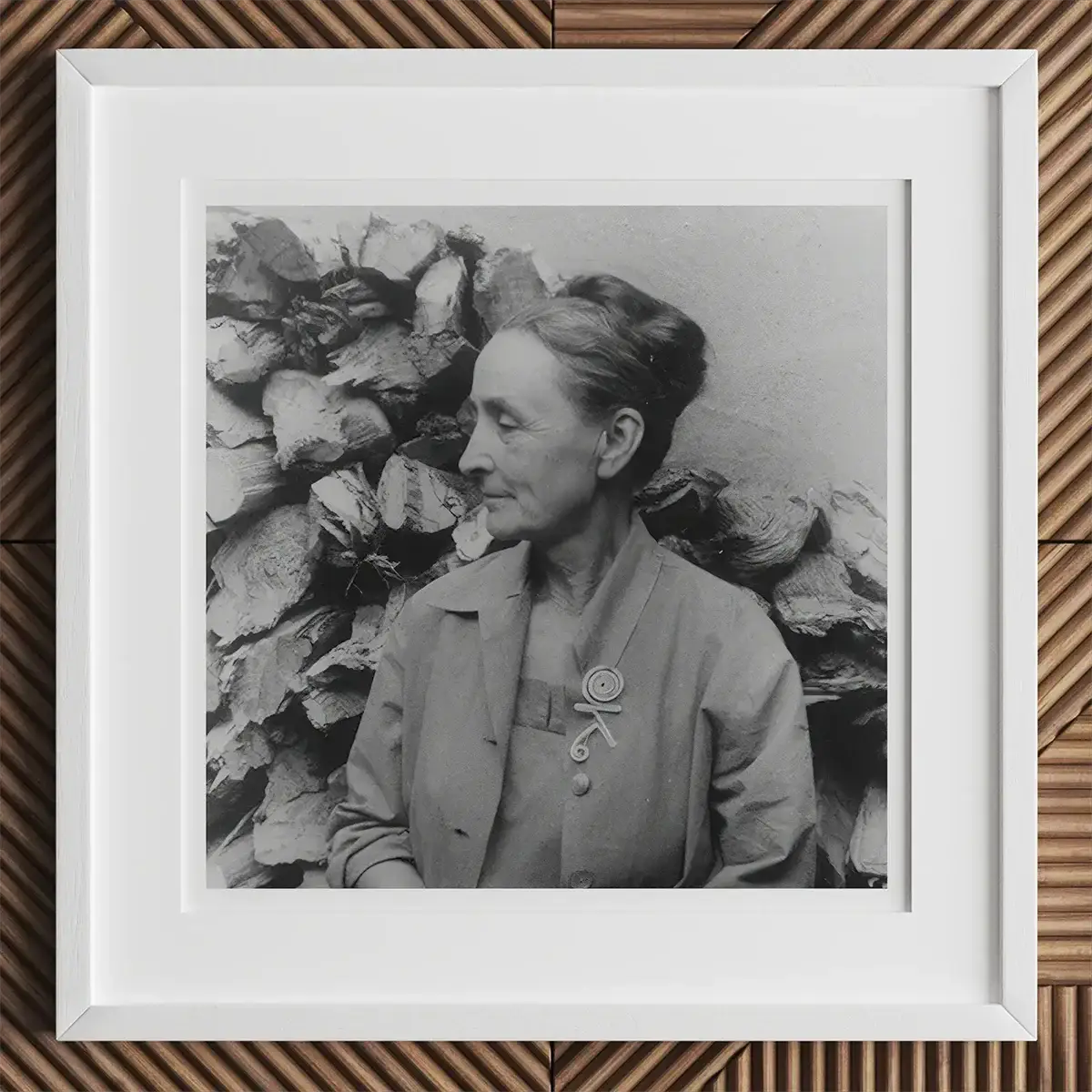
Georgia O'Keeffe — Carl Van Vechten, 1950 - Courtesy of Library of Congress
Desert as Dialogue
Georgia O’Keeffe woke with the desert. Not alarm. Not obligation. Horizon. Silence. Flame. “The morning is the best time, there are no people around,” she confided. “My pleasant disposition likes the world with nobody in it.”
At Ghost Ranch, she stirred tea, kindled fire, stretched long across white sheets to watch the sun stain cliffs rose and gold.
Solitude Bathed in Sunlight
Seven a.m. sharp: breakfast. And she adhered to a strict diet, often eating only very plain food like bread and fruit to maintain focus and physical clarity. Then, easel. Eight o’clock, brush met bone. Studio became sanctum. Flowers bloomed from canvas, not earth. Bones glowed. Colors blazed from within.
She refused to listen to music while working, believing that silence allowed her full concentration on the forms and colours she sought to express. “This is the high spot,” she mused, “what you do all the other things for.”
O’Keeffe frequently described her relationship with the desert as a “conversation”, and was known to spend hours simply walking the land in silence before returning to paint. Boots, walking stick, red rock beneath her. Rattlesnake always a possibility. Never avoided, only neutralized. Cane swung. Tail severed. Rattles collected and boxed like trophies.
Neighbors visited if lucky. Conversation possible, but never necessary.
The garden always inviting her hands. Daylight carving time into art, not errands.
And O’Keeffe’s habits were elemental. Built from landscape. Tempered by heat. Marked by solitude.
No dithering. No nostalgia. Just pared-back resolve.
Clarity Through Repetition
Each sunrise walked beside her. Each stroke bent time toward clarity. Discipline a kind of prayer. She needed space and ritual created room for creation to breathe with purpose. Snake-charming, breakfast, stillness, paint. Over and over. A desert lit from within.
8.
Andy Warhol
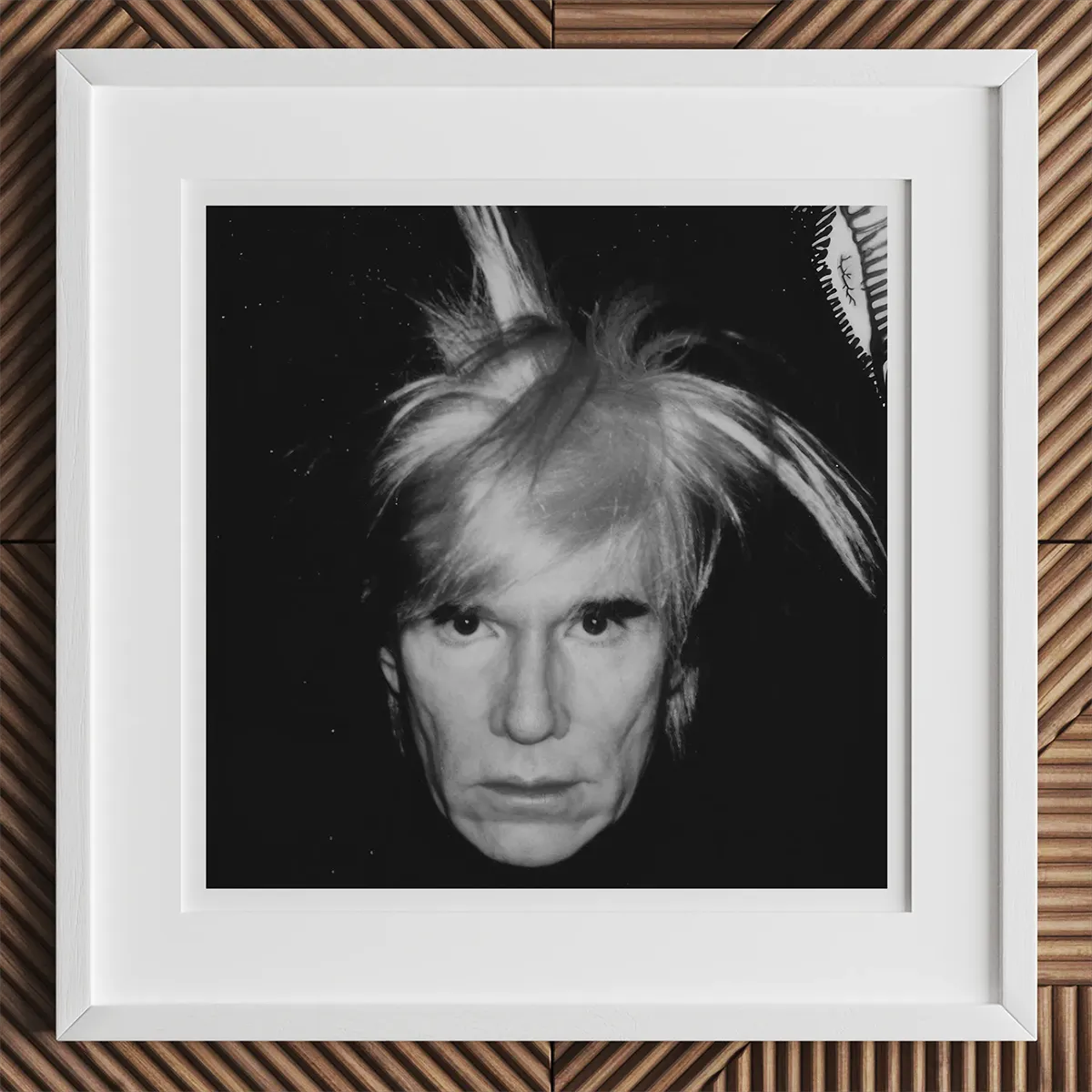
Andy Warhol — self-portrait, 1986 ©️ Andy Warhol Foundation
Myth-Making in the Mundane
Andy Warhol catalogued existence one phone call at a time. Nine a.m., Upper East Side, toast crumbs and orange juice glinting beside rotary receiver. Pat Hackett on the other end, transcribing every banal moment: who he saw, what he spent, which taxi route he took uptown. And Warhol was notoriously obsessed with documenting every financial transaction, no matter how small. He called them “tax write-off records” but they doubled as art in his eyes, because no one turned the everyday into Art like Warhol.
Diaries as Doctrine
These morning monologues became The Andy Warhol Diaries, a decade-long confessional chiseled from grocery lists and gossip. Sometimes one hour. Often two. Afterwards: shower, outfit selection. Tie and blazer for appointments, leather jacket for detours. Dogs in tow, he descended to the kitchen. Spoonful of yogurt over a bowl of fruit. New York Times noted and absorbed.
Then movement: Madison Avenue boutiques, auction houses, gem hunts downtown. Each errand laced with spectacle. Copies of Interview magazine tucked underarm. One might've landed in your palm if fate positioned you near enough. Like a handshake with celebrity’s ghost.
Afternoons: Factory hum. Silk screens. Shoots. Deals. But foundation sat earlier. In those morning dictations where trivia became tapestry. And Warhol saw the act of talking on the phone as both intimacy and performance, making multiple calls daily as part of his personal mythology-building.
Art of the Ordinary
Warhol’s art wasn’t canvas. It was curation. Of self. Of boredom. Of pattern. By turning monotony into manuscript, he blurred creator and creation. Performance framed with poise. Proving that ordinary acts, when ritualized, accrue myth. Because the details weren’t disposable. They fuelled destiny.
9.
Willem de Kooning
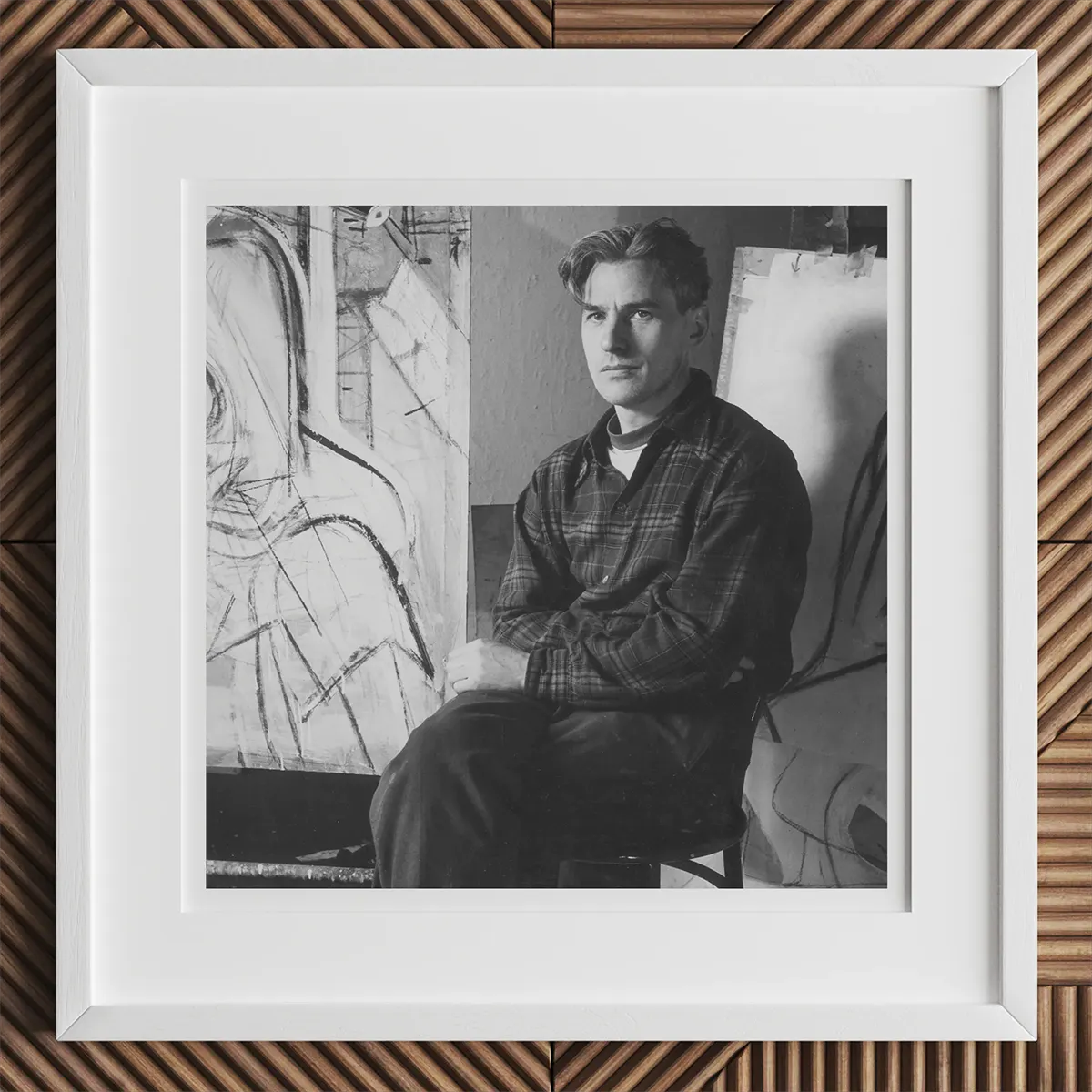
Willem de Kooning — Henry Bowden, 1946 ©️ Getty Images
Late Riser Bending Time
Willem de Kooning woke when he wanted. Which meant late. Time bent to his pace, not the other way around. Ten, maybe eleven. Morning light already turning gold.
First move: coffee. Strong, scalding, endless. Cigarette already lit. But no breakfast ritual, no precise desk, no schedule pinned to corkboard. Just paint. Until daylight dimmed. Until limbs ached. Canvas always waiting. Turpentine forever lingering in the air, which he joked ran through his veins.
Art as Habitat
His studio wasn’t separate. It was life. Home folded into creation. He once said he needed to “walk around a lot” while thinking about a piece. Frequently circling the studio for hours before beginning a single brushstroke. And he preferred to work in loose-fitting clothes. Often paint-stained, occasionally shirtless. Notorious for looking disheveled in the studio but sharply dressed in public.
His routine included long, quiet periods where he would just stare at a canvas for what seemed like hours, believing “inarticulate time” was necessary for breakthrough.
Communion Through Paint
Lunch happened only if remembered. Visitors arrived unannounced. Friends, critics, artists, lovers. Welcomed with whisky, stories, cigarettes. Paintings surrounding every exchange.
Elaine Fried, his wife and fellow painter, matched his hours, mirrored his mess in their shared studio. Silent brushes. Muted jazz. Coffee interrupted by critique, then more marks, more turpentine.
At night, they wandered to Cedar Tavern. Argued art. Smoked until throats rasped. Stumbled home through city fog.
And so it was that De Kooning’s daily rhythm carried the rigor of an office worker without a punch clock. Each day folded into another. Wake late. Brew dark. Paint through static. Repeat. Routine formed not from precision, but persistence laced with connection.
10.
Vincent van Gogh
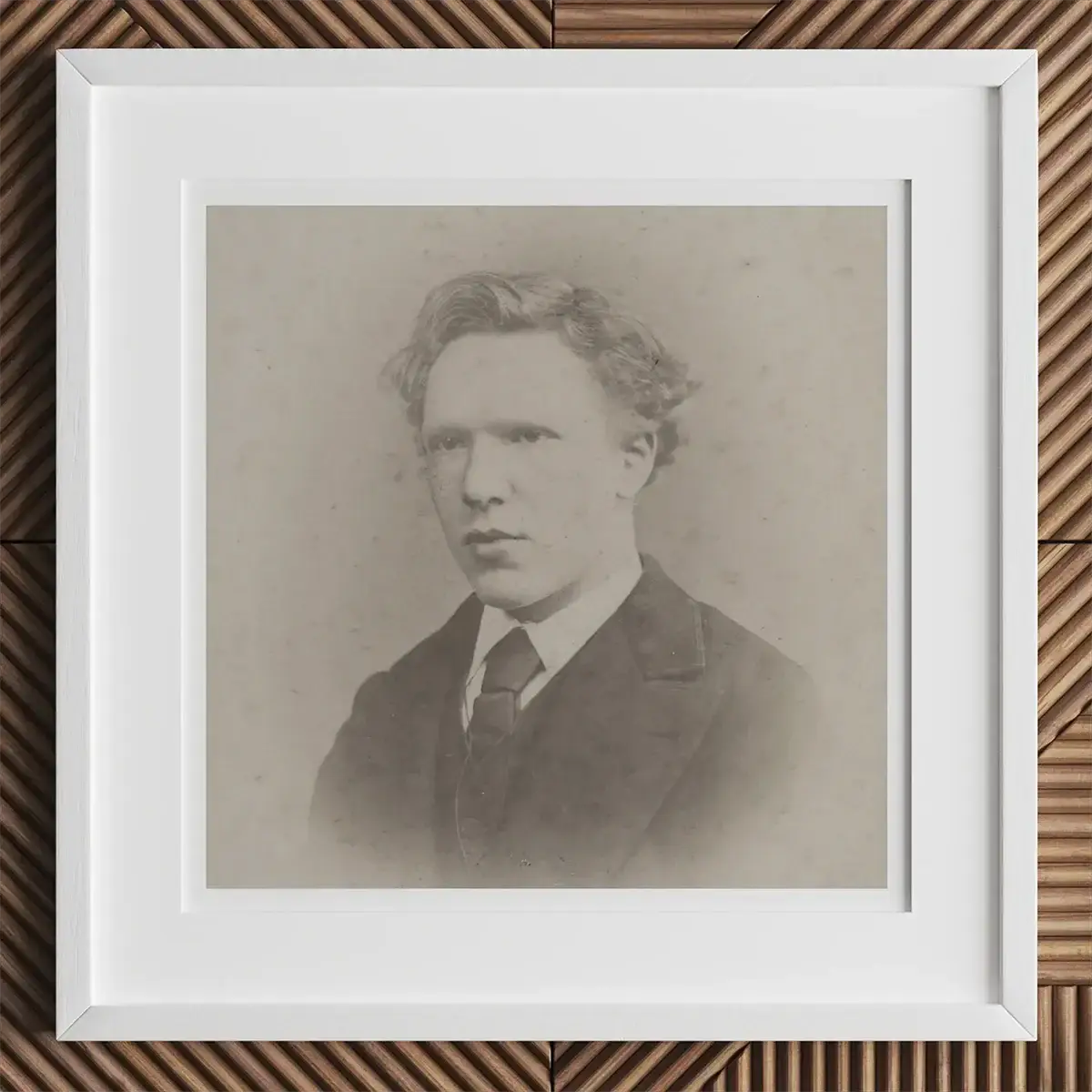
Vincent van Gogh — photographer unknown, 1873
Work Without Pause, Sleep Without Mercy
Vincent van Gogh painted like time owed him something. Arles, 1888: southern light, delirium, promise. “Today again from seven o’clock in the morning till six in the evening I worked without stirring,” he wrote to his brother, Theo. Not a pause except for food grabbed mere steps away. Canvas after canvas. Eleven hours. Often forgetting meals entirely when in a state of “painting fever,” sometimes leading to fainting or collapse
Exhausting Every Nerve
He didn’t stop at dusk. He couldn’t. “I shall do another picture this very night,” he often declared. Rarely cleaning his brushes and frequently reusing canvases, painting over old works when supplies were low. Some nights, he lit lanterns. Others, legend insists, he donned a candlelit straw hat. Flames encircling him like a martyr-artist-saint.
When Gauguin visited, the tempo bent slightly but never broke. “Working, working all the time,” Vincent reported. “In the evening we are dead beat.” Café, absinthe, collapsing into bed. But not before exhausting every nerve.
Compulsion/Kronos
He didn’t wear a watch. When the current surged, he chased it. Star fields. Sunflowers. Reflections rippling the Rhône. No scheduled interlude. Only instinct. Obsession.
His rituals were never about hours spent. They were unrelenting cycles. Mania, then void. Painting, then collapse. The act sustained him. The output burned through him. “Dumb fury of work,” he called it. Not romantic. Not tidy. But absolute until he broke. Again. Again. Again.
In a decade, he produced what others couldn’t in a lifetime. Fire, brush, ache, surrender. His ritual was combustion, propulsion, profusion. A life lived entirely in pigment and panic, undone by the same compulsion that made him eternal.
11.
Jackson Pollock
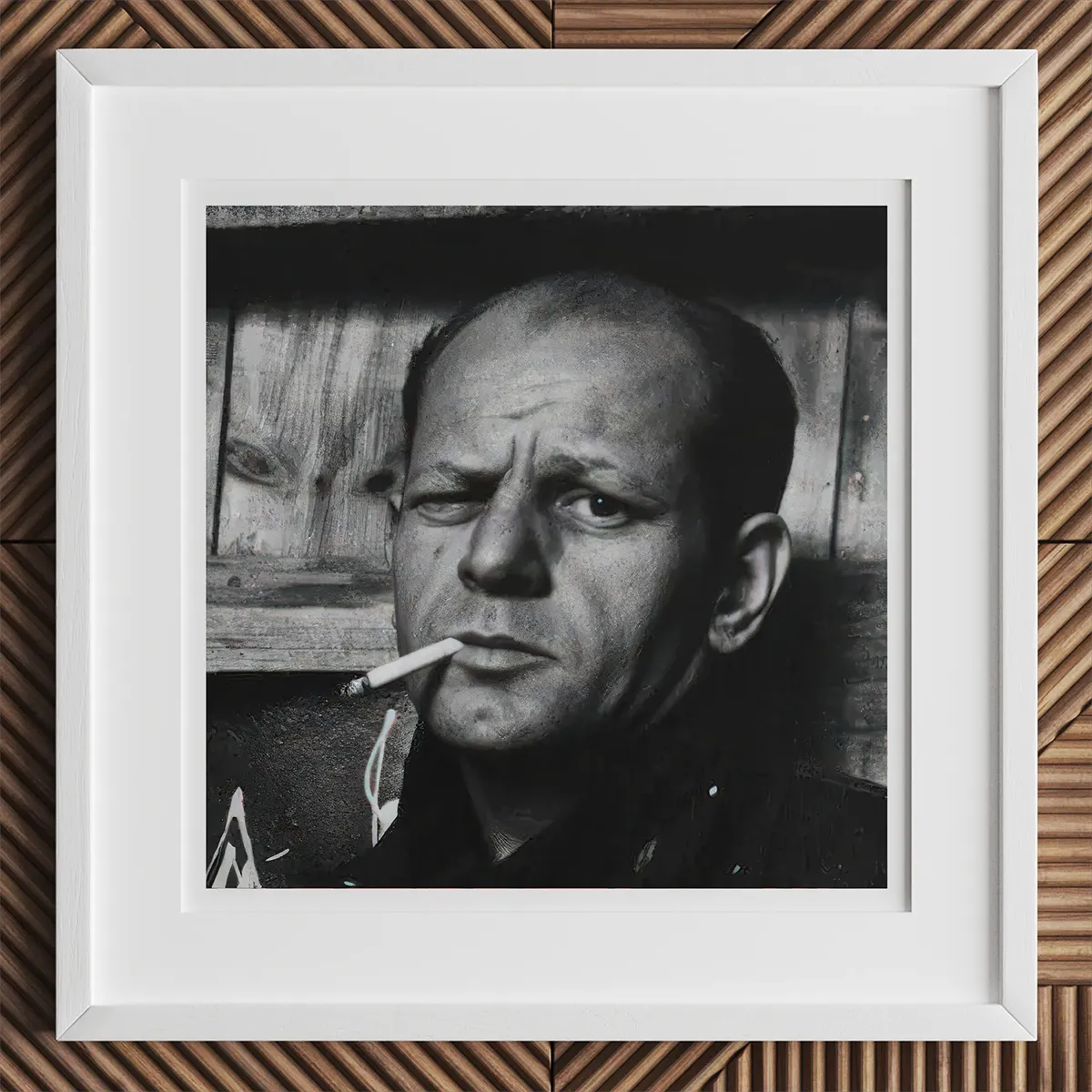
Jackson Pollock — photographer unknown, 1935
Painting as Performance, Not Product
“My painting does not come from the easel,” Pollock once declared. He circled canvases. Stalked them. Poured enamel like invocation. Studio floor, never wall. Barn, not salon. “On the floor I am more at ease,” he said. “I can walk around it, work from the four sides and literally be in the painting.” Often painting in the nude or barefoot, believing it helped him physically feel the “pull of the painting.” None of it metaphor, always method.
Midday Starts, Midnight Frenzies
Pollock’s most productive months were often in late spring and early summer, when weather allowed open-air barn painting in East Hampton. He laid cotton duck flat, then prowled, brushless, cigarette tucked between lips, jazz whispering from the radio. Sticks, syringes and turkey basters were his instruments. Rhythm became line. Motion dictated mark.
Mornings began near noon. Whiskey-soaked residue. Coffee clutched like salvation. He tried taming sleep cycles but never succeeded. Instead, he found form within chaos. Grounded in movement, elevated by velocity.
Surrender to the Act, Not the Outcome
Sobriety sharpened his spells. Lee Krasner heard his boots scrape the concrete deep into night. Drip by drip, trance thickened. Days might pass without a stroke. Then, 36 hours of frenzy. No meals. No breaks. Just dance.
Each piece bore the body. Not trace. Not suggestion. Presence. The artist disappeared. The act remained. And how did he know a work was done? “How do you know when you’re done making love?” he fired back.
Pollock painted until he vanished inside gesture. What survived was residue. Action made artifact. A furious constellation of muscle, memory, splatter and drip.
12.
Marina Abramović
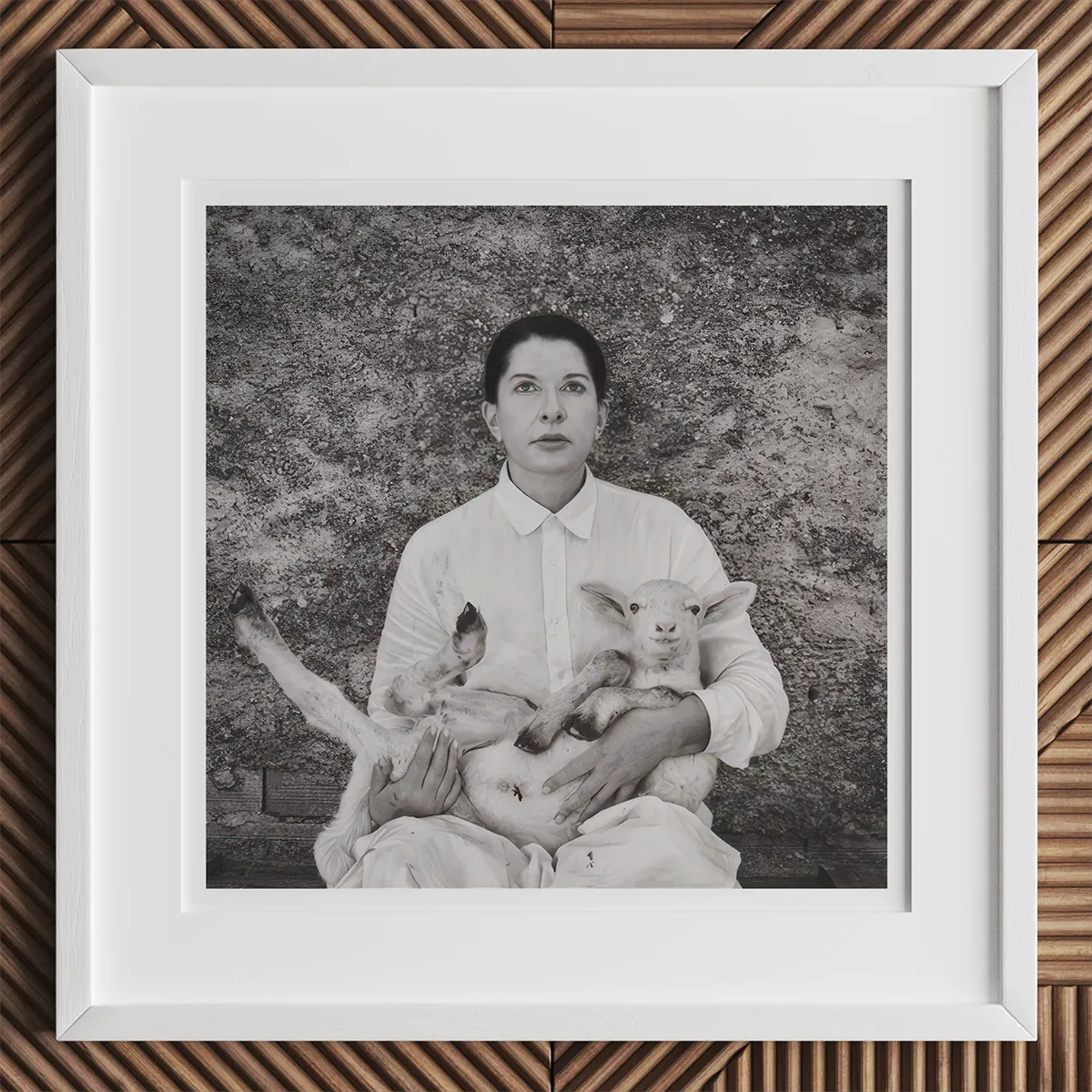
Marina Abramović — self-portrait, 2010 ©️ Marina Abramović
Becoming the Ritual
Marina Abramović sculpted silence from suffering. In 2010, prepping for The Artist Is Present, she became her own apparatus: body-temple, time-machine, service-sacrifice. Eleven weeks. Six days per. Seven hours unmoving. Staring into strangers, absorbing everything, exuding nothing.
Devotion, Not Rehearsal
Preparation began in darkness. Every 45 minutes, all night long, she rose. Drank water. Lay back down. Repeat. Hydration as mantra. At 6:30 a.m., final waking. Breakfast: rice, lentils, black tea. Sparse. Functional. Deliberate.
By 9:00, chauffeured to MoMA. Donned high-collared robe, a costume of stillness. Before crowds arrived, she sat alone, marking the wall with a notch. One for each completed day. Quiet exhale. Readiness. Then, into presence.
Endurance Built in the Dark
For three months, she didn’t speak. Didn’t blink first. Didn’t eat all day. Didn’t flinch. But none of it happened by accident. Discipline made transcendence possible. Devotion made the impossible mundane.
“Drinking water at 3 a.m. can be as profound as prayer,” she once said. Every alarm, every measured swallow, every clenched hour was performance. Her exhibition began long before gallery lights. Proving endurance is more than spectacle. It’s repetition. Without witness. Without applause. And that’s where her art truly lives.
13.
Gerhard Richter
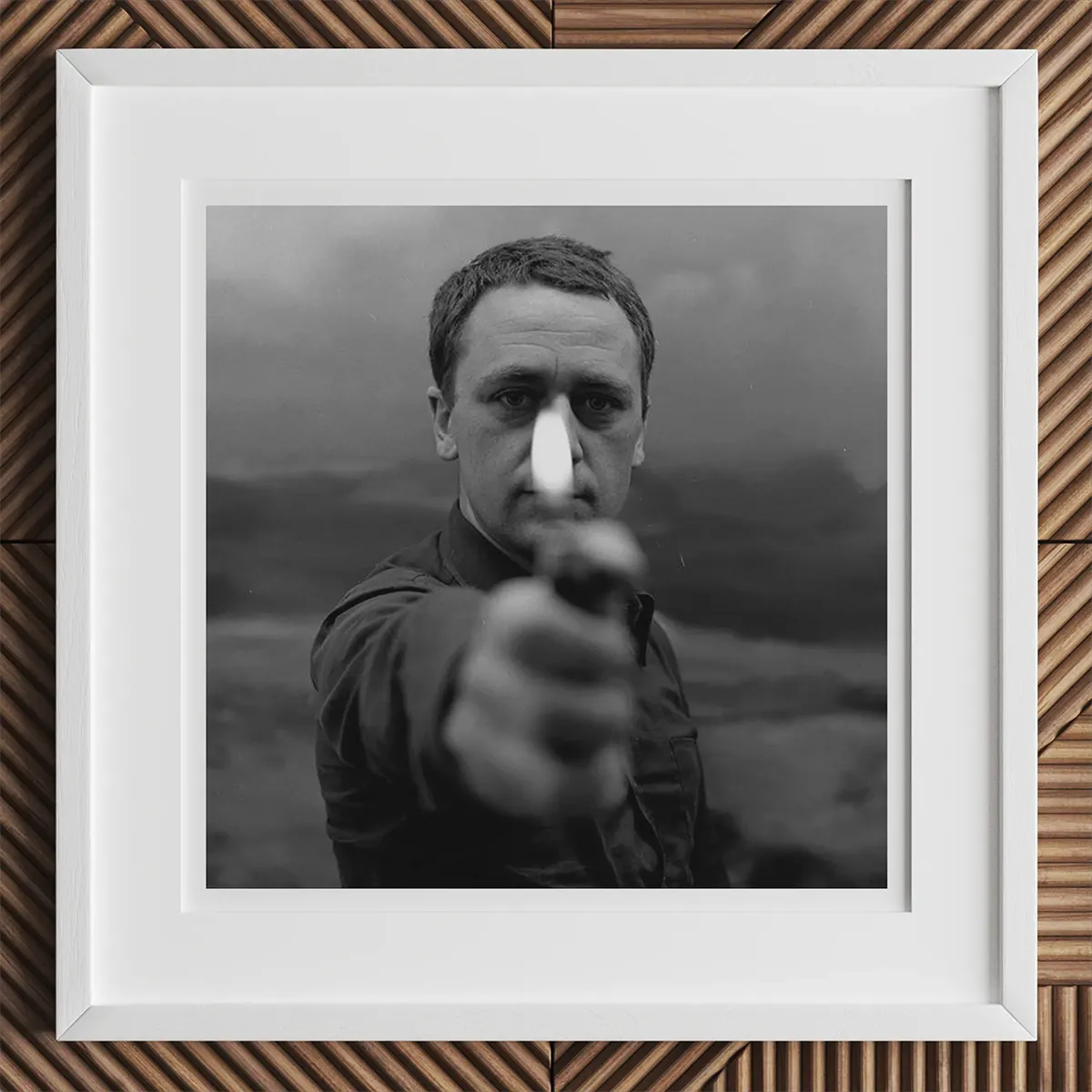
Gerhard Richter — self-portrait, 2017 ©️ Gerhard Richter
Presence Without Demand
Gerhard Richter started each day with an immaculate shrug. Not every morning yielded paint. Some offered silence. He showed up regardless. Studio key turned. Kettle boiled. Shirt pressed. Tools aligned.
“I go to the studio every day, but I don’t paint every day,” he admitted. Sometimes, hours passed just looking. Eyes scanning surface, waiting for permission. No rush. No panic.
Disruption as Structure, Not Escape
If the canvas stayed mute, he redirected. Deliberately alternating between abstraction and realism to avoid creative complacency. Routine needing disruption to retain meaning. And so, architectural models might beckon, too. He'd move tiny walls, sort brushes by hue, rearrange jars like puzzle pieces. “I love making plans,” he smiles.
Eventually, something stirred. Then action. Whole afternoons pulled into motion. A squeegee, nearly as tall as him, dragged across pigment. Layers built, then obliterated. Gesture, then erasure. Creation, then refusal.
Where Intuition Meets Precision
Observers noted the physicality: how he clenched teeth, muscles straining. Bach playing nearby. Baroque order meets chromatic entropy. But no tantrums, no mess. Richter rejected spectacle. Preferring method. If a painting resisted, he'd set it aside. Wait. Tomorrow offering another attempt. Never chasing inspiration. Always engineering opportunity.
“You have to find the idea,” he told students. Ritual is the scaffold. Faith is in showing up. A blueprint where intuition meets discipline. And through that balance, Richter mapped abstraction and memory, fact and fiction.
14.
Lee Krasner
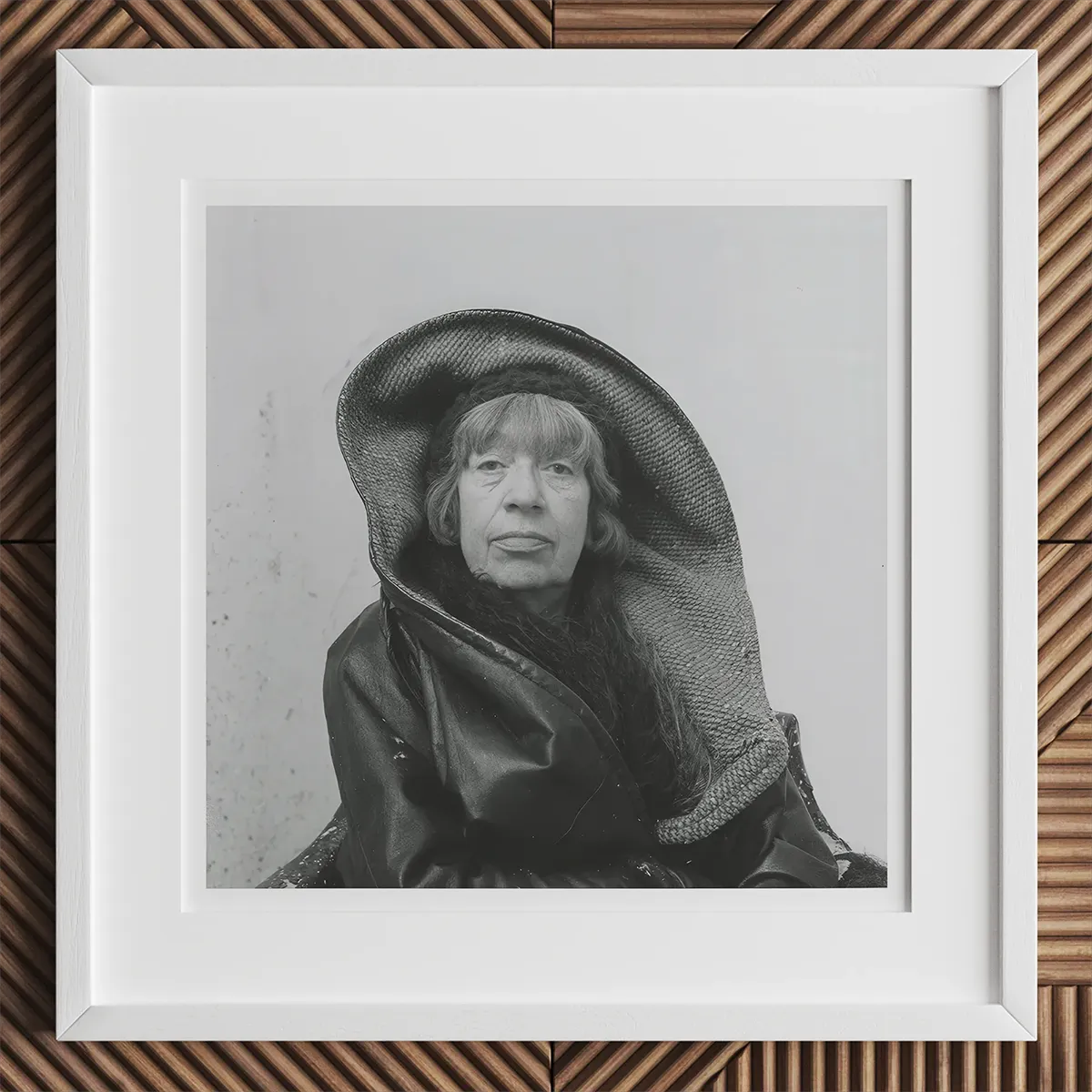
Lee Krasner — Irving Penn, 2010 ©️ Irving Penn Foundation
Grief as Catalyst, Insomnia as Medium
After Jackson Pollock’s fatal crash, Lee Krasner found herself inside silence so thick it howled. Widowhood came with insomnia. Nights lengthened, sleep vanished. She didn’t fight it. She painted.
“I got tired of fighting insomnia and tried to paint instead,” she said.
Night Journeys and Umber Transformations
She entered his barn alone, now hers, and turned grief into gesture. Blank canvases met sorrow soaked in umber, sienna, charcoal. The palette darkened and so did the hour. Midnight. Two. Four. Nocturnal compositions churned from aching limbs, blurred eyes. By dawn, she collapsed into fitful slumber.
She called the transition to night painting “unintentional,” but it ultimately freed her from inherited aesthetic habits, forcing a different kind of physicality in her mark-making. These became her “Umber Paintings.” Critics renamed them “Night Journeys.” And they throbbed. Clawed. Each stroke a confrontation with emptiness, each smear an exorcism.
Widow, Artist, Executor, Force
Night liberated her. Perfectionist tendencies softened. Darkness gave cover. Precision slipped into instinct. Then morning came grey. She assessed the canvas under softer light before administration: exhibitions, estate correspondence, paperwork. Her role as executor never paused. But whenever dusk returned, so did the compulsion.
These works weren’t consolation. They were becoming. The world saw her, finally, not as appendage but as force. And through grief, she found grammar. Through sleeplessness, rhythm.
Canvas became her clock. Brush, her heartbeat. Shadows, her signature.
Reading List
Currey, Mason. Daily Rituals: How Artists Work. New York: Alfred A. Knopf, 2013.
Cain, Abigail. “These Famous Artists Proved That Staying Up Late Can Lead to Great Ideas.” Artsy, October 22, 2018.
Cain, Abigail. “The Morning Routines of Famous Artists, from Andy Warhol to Louise Bourgeois.” Artsy, August 15, 2018.
Museum of Modern Art (MoMA). “Jackson Pollock, 1947 Statement from Possibilities.” MoMA Interactive Exhibition (1998).
Robards, Emily. “Daily Rituals: Henri Matisse.” The In-Between (blog), August 18, 2013.
Burkeman, Oliver. “Rise and Shine: The Daily Routines of History’s Most Creative Minds.” The Guardian, October 5, 2013.

